LCLS-II-HE Science
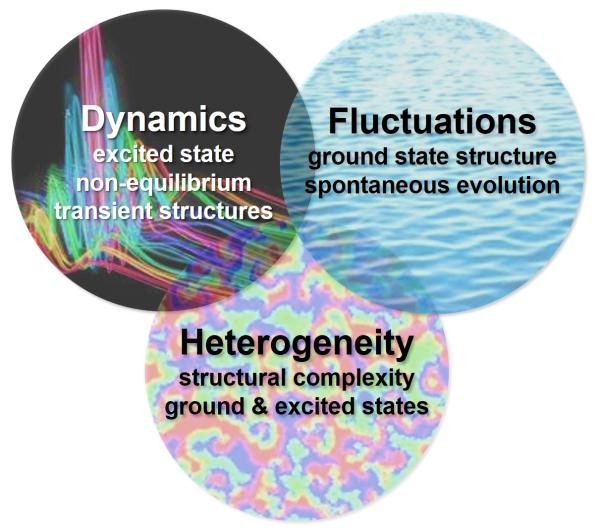
The science needs for the capabilities of LCLS-II-HE have been developed by the international science community over many years. We highlight seven broad classes of science for which LCLS-II-HE will uniquely address critical knowledge gaps by enabling precision measurements of structural dynamics on atomic spatial scales and fundamental timescales, thus providing detailed insight into the behavior of complex matter in real-world heterogeneous samples on fundamental scales of energy, time, and length. These examples represent just a few of the many science opportunities where hard X-rays at high repetition rate are particularly enabling, and is not intended to be comprehensive of the broad range of science that is driving the development of such facilities.
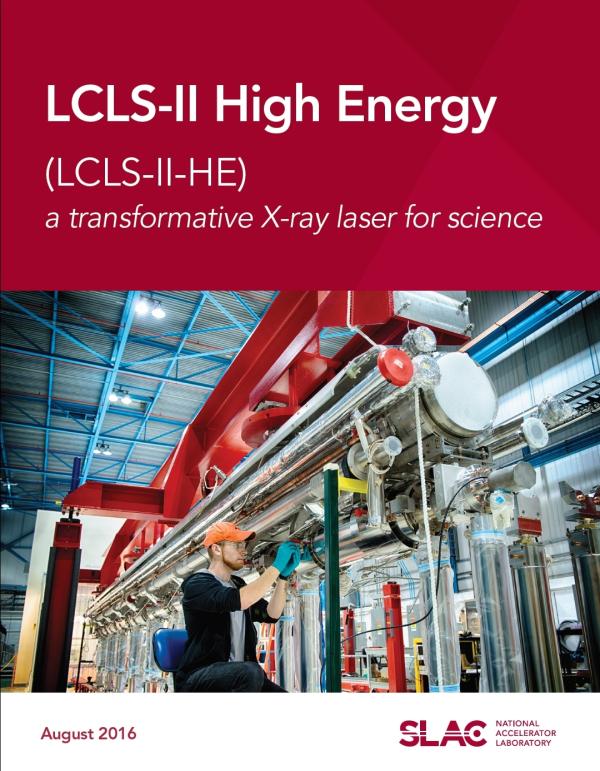
The LCLS-II-HE science case (report: SLAC-R-1143 ) provides a compilation and further details on the most compelling science opportunities:
LCLS-II-HE High Energy (LCLS-II-HE): A Transformative X-ray Laser for Science; Report: SLAC-R-1143
LCLS-II-HE: Coupled dynamics of energy and charge in atoms and molecules.
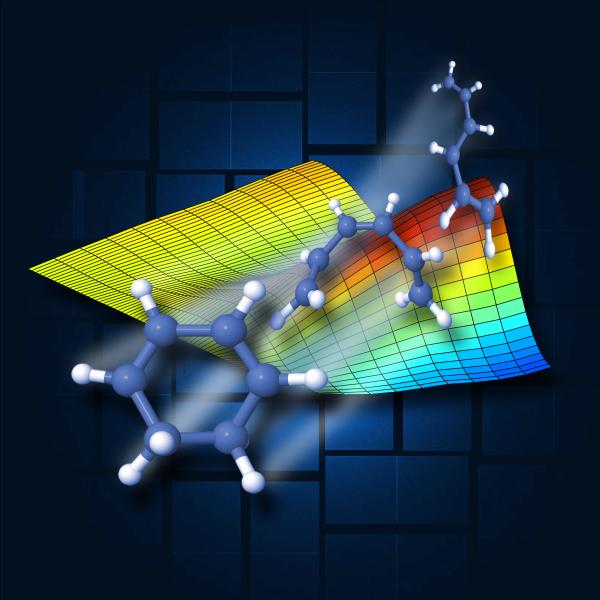
Flows of energy and charge in molecules are the fundamental processes that drive chemical reactions and store or release energy. They are central to energy processes ranging from combustion to natural and man-made molecular systems that convert sunlight into fuels. Understanding and controlling these processes remains a fundamental science challenge, in large part because the movement of charge is closely coupled to subtle structural changes of the molecule. Sharper experimental tools are needed to probe these processes – simultaneously at the atomic level and on natural (femtosecond) time scales. LCLS-II-HE will image dynamics at the atomic scale via hard X-ray scattering and coherent diffractive imaging (CDI) to reveal the coupled behavior of electrons and atoms with unprecedented clarity. The combination of hard X-rays with high peak power and high average power will enable new nonlinear spectroscopies that promise important new insights into reactive chemical flows in complex chemical environments such as combustion.
LCLS-II-HE: Catalysis, photocatalysis, environmental & coordination chemistry.

A deeper understanding of the fundamental processes in catalysis, photocatalysis, and interfacial chemistry is essential for directed design of new systems for chemical transformations, energy storage, and solar energy conversion that are efficient, chemically selective, robust, and based on Earth-abundant elements. LCLS-II-HE will reveal the critical (and often rare) transient events in these multistep processes, from light harvesting to charge separation, migration, and accumulation at catalytically active sites. Time-resolved, high-sensitivity, element-specific scattering and spectroscopy enabled by LCLS-II-HE will provide the first direct view of atomic-scale chemical dynamics at interfaces. The penetrating capability of hard X-rays will probe operating catalytic systems across multiple time and length scales. The unique LCLS-II-HE capability for simultaneous delivery of hard and soft X-ray pulses opens the possibility to follow chemical dynamics (via spectroscopy) concurrent with structural dynamics (substrate scattering) during heterogeneous catalysis. Time-resolved hard X-ray spectroscopy with high fidelity, enabled by LCLS-II-HE, will reveal the fine details of functioning biological catalysts (enzymes) and inform the design of artificial catalysts and networks with targeted functionality.
LCLS-II-HE: Imaging biological function and dynamics.

The combination of high spatial and time resolution with a high repetition rate will make LCLS-II-HE a revolutionary machine for many biological science fields. At high repetition rates, serial femtosecond crystallography (SFX) will advance from successful demonstration experiments to addressing some of the most pressing challenges in structural biology for which only very limited sample volumes are available (e.g. human proteins); or only very small crystal sizes can be achieved (<1 μm); or where current structural information is significantly compromised by damage from conventional X-ray methods (e.g. redox effects in metalloproteins). In all of these cases, high throughput and near-physiological conditions of room temperature crystallography will be qualitative advances. X-ray energies spanning the Se K-edge (12.6 keV) will further enable de novo phasing and anomalous scattering. Time-resolved SFX and solution SAXS will advance from present few-time snapshots of model systems at high photolysis levels to full time sequences of molecular dynamics that are most relevant for biology. Hard X-rays and high repetition rates will further enable advanced crystallography methods that exploit diffuse scattering from imperfect crystals, as well as advanced solution scattering and single particle imaging methods to map sample heterogeneity and conformational dynamics in native environments.
LCLS-II-HE: Materials heterogeneity, fluctuations, and dynamics.

Heterogeneity and fluctuations of atoms and charge-carriers – spanning the range from the atomic scale to the mesoscale – underlie the performance and energy efficiency of functional materials and hierarchical devices. Conventional models of ideal materials often break down when trying to describe the properties that arise from these complex, non-equilibrium conditions. Yet, there exists untapped potential to enhance materials performance and create new functionality if we can achieve a much deeper insight into these stochastic atomic-scale dynamics. Important examples include: structural dynamics associated with ion transport in materials for energy storage devices and fuel cells; nanostructured materials for manipulating nonequilibrium thermal transport; two-dimensional materials and heterostructures with exotic properties that are strongly influenced by electron-phonon coupling, light-matter interactions, and subtle external stimuli; and perovskite photovoltaics where dynamic structural fluctuations influence power conversion efficiency. LCLS-II-HE will open an entirely new regime for time-domain coherent X-ray scattering of both stochastic (e.g. XPCS) and triggered (pump-probe) dynamics with high average coherent power and penetrating capability for sensitive real-time, in situ probes of atomic-scale structure. This novel class of measurements will lead to new understanding of materials, and, ultimately, device performance, and will couple directly to both theory efforts and next-generation materials design initiatives.
LCLS-II-HE: Quantum materials and emergent properties.
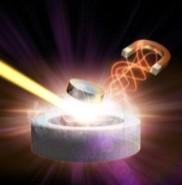
There is an urgent technological need to understand and ultimately control the exotic quantum-based properties of new materials – ranging from superconductivity to ferroelectricity to magnetism. These properties emerge from the correlated interactions of the constituent matter components of charge, spin, and phonons, and are not well described by conventional band models that underpin present semiconductor technologies. A comprehensive description of the ground-state collective modes that appear at modest energies, 1-100 meV, where modern X-ray sources and spectrometers lack the required combination of photon flux and energy resolution, is critical to understanding quantum materials. High-resolution hard X-ray scattering and spectroscopy at close to the Fourier limit will provide important new insights into the collective modes in 5d transition metal oxides – where entirely new phenomena are now being discovered, owing to the combination of strong spin-orbit coupling and strong charge correlation. The ability to apply transient fields and forces (optical, THz, magnetic, pressure) with the time-structure of LCLS-II-HE will be a powerful approach for teasing apart intertwined ordering, and will be a step toward materials control that exploits coherent light-matter interaction. Deeper insight into the coupled electronic and atomic structure in quantum materials will be achieved via simultaneous atomic-resolution scattering and bulk-sensitive photoemission enabled by LCLS-II-HE hard X-rays at high repetition rate.
LCLS-II-HE: Materials in extreme environments.
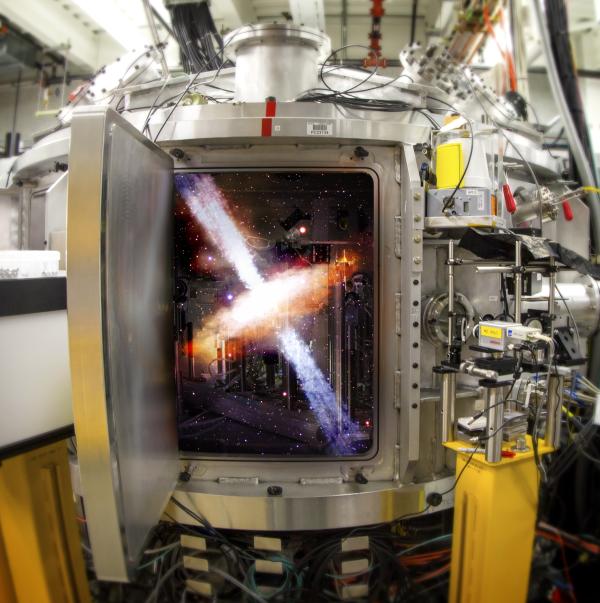
LCLS-II-HE studies of extreme materials will be important for fusion and fission materials applications and could lead to important insights into planetary physics and geoscience. The unique combination of capabilities from LCLS-II-HE will enable high-resolution spectroscopic and structural characterization of matter in extreme states that is far beyond what is achievable today. High peak brightness combined with high repetition rates and high X-ray energies are required to: (i) penetrate dynamically heated dense targets and diamond anvil cells (DAC), (ii) achieve high signal-to-noise data above the self-emission bremsstrahlung background, (iii) probe large momentum transfers on atomic scales to reveal structure and material phases, and (iv) measure inelastic X-ray scattering with sufficient energy resolution and sensitivity to determine the physical properties of materials.
LCLS-II-HE: Nonlinear X-ray matter interactions.
A few seminal experiments on the first generation of X-ray free-electron lasers, LCLS and SACLA, have demonstrated new fundamental nonlinear hard X-ray-matter interactions, including: coherent two-photon absorption, phase-matched sum frequency generation, second harmonic generation, and two-photon Compton scattering. While nonlinear X-ray optics is still in the discovery-based science phase, advances in our understanding of these fundamental interactions will lead to powerful new tools for atomic and molecular physics, chemistry, materials science, and biology via measurement of valence charge density at atomic resolution and on the attosecond-to-femtosecond timescale of electron motion. The combination of high repetition rate and high peak intensity pulses from LCLS-II-HE will enable high-sensitivity measurements that exploit subtle nonlinear effects. This will transform the nonlinear X-ray optics field from demonstration experiments to real measurements that utilize the nonlinear interactions of “photon-in, photon-out” to simultaneously access transient spectroscopic and structural information from real materials.
